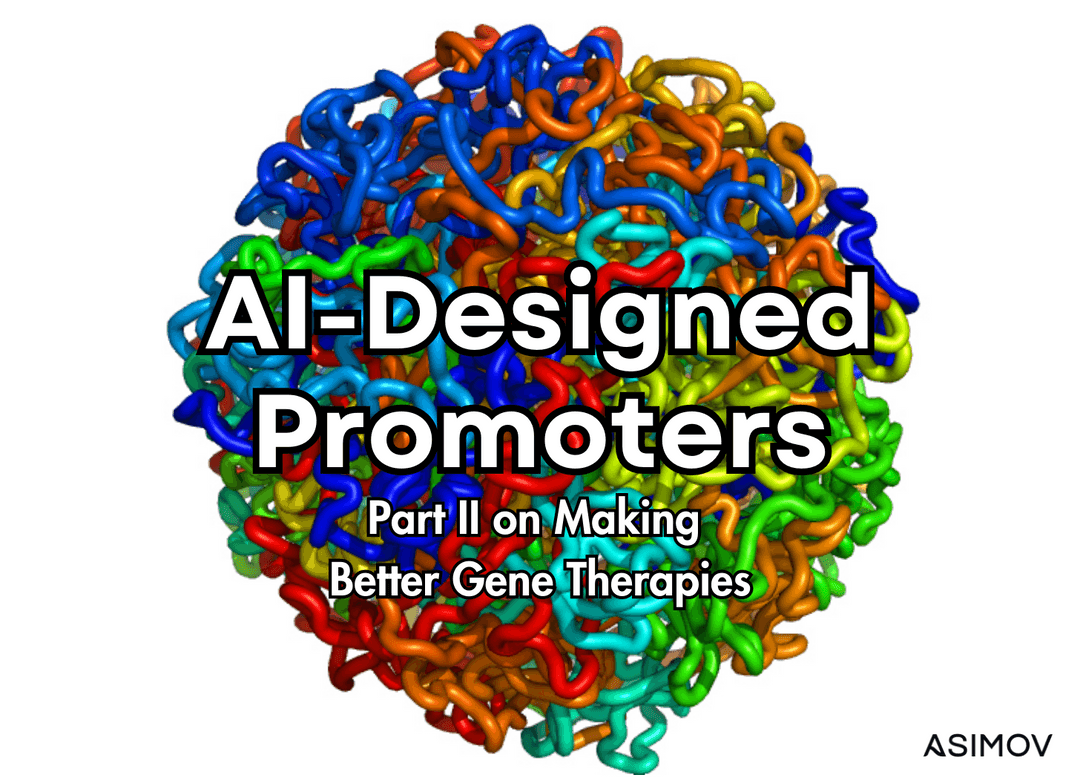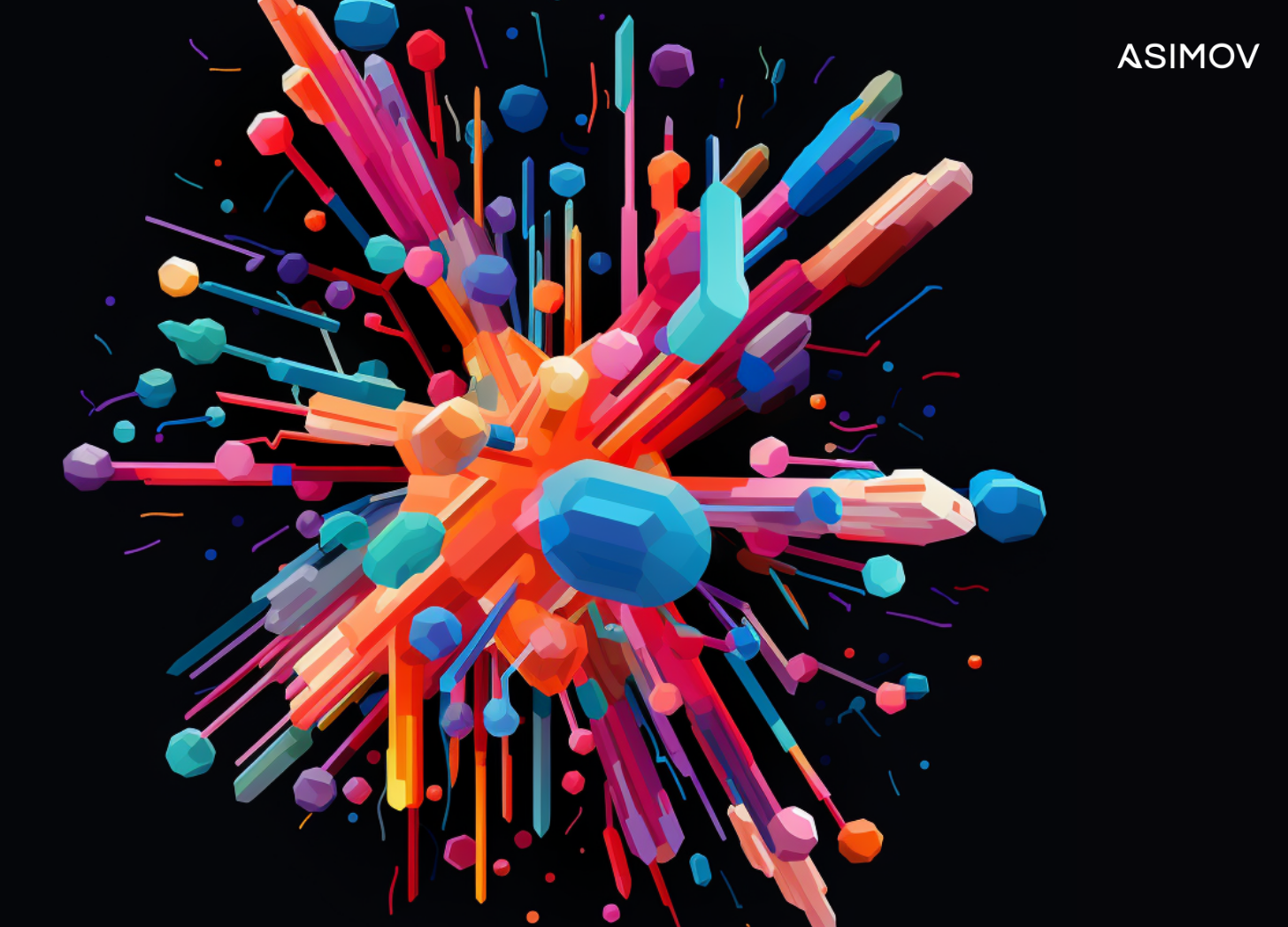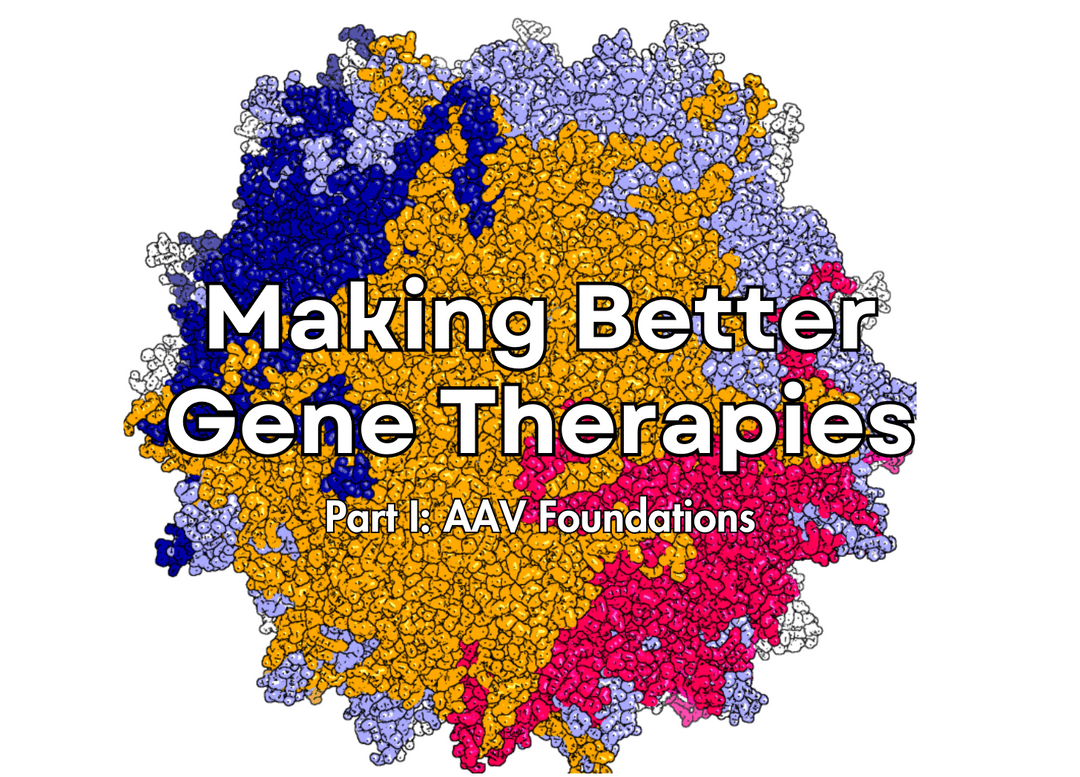Making Better Gene Therapies
By Niko McCarty
Last week, we released AAV Edge, an AI-powered platform for AAV biomanufacturing. It includes a suite of tools and cell lines to design gene therapy payloads and optimize manufacturing processes — all in one place. We think it’s a really important step for the field and could help reduce the cost of gene therapies. In this blog, we explain how it works and why it matters.
For context, adeno-associated viruses, or AAVs, are tiny, non-disease-causing viruses that are often used as delivery vehicles for gene therapies. Therapeutic genes are packaged into AAVs and injected into the body to correct genetic defects. The F.D.A. has already approved dozens of these therapies, treating everything from spinal muscular atrophy to multiple myeloma and an inherited form of blindness. Tens of thousands of people have received gene therapies to-date, but this number could balloon to millions in the coming decade.
In order for gene therapies to scale, however, we’ll first have to solve challenges related to safety and manufacturability, which will in turn help cut costs. A gene therapy for spinal muscular atrophy costs more than $2 million, for example; manufacturing costs are much higher for these therapies compared to small molecule drugs.
AAV Edge is the first comprehensive platform that allows for end-to-end optimization — from payload design to cell lines to model-guided processes — for gene therapies. Scientists using our tools won’t need to use different suppliers or move back-and-forth between payload designs and manufacturing steps. AAV Edge also achieves unconcentrated titers up to E12 viral genomes per milliliter (vg/mL) across multiple serotypes.

Let’s quickly recap how AAVs are made. Briefly, loops of DNA, called plasmids, are inserted into cells; either HEK293 (an immortalized human kidney cell) or SF9, from armyworm moths.1 Three separate plasmids are typically used to do this. One plasmid encodes the ‘payload,’ or the gene designed to treat the patient’s disease. This could be a healthy version of the hemoglobin beta gene, say, to fix a mutation causing sickle-cell anemia. The ‘payload’ is positioned next to a promoter that controls how much of the gene is expressed in human cells, and where the gene is expressed; some promoters are more active in heart or brain, for example. The other plasmids encode AAV’s replication machinery, capsid, and all the other proteins needed to generate functional viruses.
In nature, AAVs package capsids nearly perfectly, which means almost every particle is infectious. But this isn’t the case in the laboratory. A decent portion of AAVs made by engineered organisms are unfilled, which means more AAVs need to be injected into a patient to see a desired outcome, which means there’s a higher chance of causing an immune response. Over 30% of gene therapy trials — including those that use AAVs — report a serious adverse event.
.png?width=6668&height=5393&name=aav_genetics_for_blog_v7%20(1).png)
There is also a tradeoff between titer and filled AAVs. With AAV Edge, we see unconcentrated titers of ~1E12 vg/mL for four-out-of-five AAV serotypes (AAV2, AAV6, AAV8, and AAV9) and a range of percent “filled” capsids up to ~70 percent. We’re working diligently to improve our tools, but the good news is that we’ve built models to predict this tradeoff and can easily help scientists define the process parameters that best fit their needs. A forthcoming blog will discuss all of this in greater detail.
In the meantime, let’s look at the suite of cell lines and tools — both computational and wet-lab — that we’ve developed as part of AAV Edge. Here are our tools for payload design:
-
Tissue-Specific Promoters: We’ve designed synthetic promoters — DNA sequences that control gene expression — that are only active in specific tissues, and that have minimal off-targeting to the liver (>200-fold increase in expression target vs. off-target tissue). These have been verified in animals. By fine-tuning these sequences using an in-house transformer-based model, we can achieve desired therapeutic effects at lower doses, reducing the risk of immune reactions.
-
Sequence Optimization Algorithms: Our codon optimization tool boosts clinical transgene expression up to 7x, as measured by transducing HEK293T cells with AAV and measuring gene expression using flow cytometry (see microscopy images below).
-
Payload Silencing: By silencing the gene of interest — down to zero detectable transgene expression — during the manufacturing process using an RNA interference-based circuit, we reduce cellular stress and toxicity, leading to higher-quality AAVs. This circuit is encoded on a separate plasmid from the transgene payload, ensuring transgene silencing occurs only in the producer cell and not a patient’s cells.

AAVs containing two different clinically-relevant genes (RPE65 and SMN1) — either codon-optimized (right column) or not (left column) — fused to mNeonGreen were manufactured using AAV Edge. Crude viral products were then used to transduce HEK293T cells. Each cell was exposed to about 10,000 viral particles, as measured by ddPCR. The expression of mNeonGreen was measured using microscopy and flow cytometry.
And our manufacturing tools:
-
HEK293 Cell Line: Clonal, suspension-adapted in chemically defined media, and GMP banked under ICH Q5 guidelines. Our cell line has a 25-hour doubling time and non-clumpy growth phenotype.
-
Two-Plasmid System: An optimized two-plasmid system that is compatible across many different capsids. The plasmids are easily configurable. Our two-plasmid system produces high titers, may reduce costs associated with ordering GMP-grade DNA and, in some cases, makes it easier to precisely tune the expression of various AAV components.
-
Models for Process Development: We used data-driven, statistical, and mechanistic approaches to understand and optimize AAV Edge across scales and bioreactor configurations. Our models explain and predict the effects of changing process and transfection conditions on titer and the percent of full capsids across serotypes. We have observed up to a 100% relative improvement of titer and the percent of full capsids using our model-guided experimental design pipeline.
Developers can access these tools through Kernel, our software tool for genetic design, and order the DNA constructs they design directly from our Boston-based laboratory. We’re excited about this platform because it lets developers customize therapies with unprecedented specificity, at every part of the process, to potentially lower doses and minimize immune responses.
This is our third product launch in the past year (the others are CHO Edge for antibodies and LV Edge for lentivirus manufacturing). All of these platforms are made by merging quantitative, biological engineering with computational models to make more reliable medicines. We’ll continue working to make them even better! For more information on AAV Edge, visit our website.
Footnote
- As we’ve previously written, “Immortalized insect cells make greater quantities of virus, compared to kidney cells, but the AAVs seem to be less effective at delivering their payloads. Recent work from Nicole Paulk’s group (now the CEO of Siren Biotechnology) suggests two reasons for this: either the insect cells add post-translational modifications — chemical ‘tags’ — to the outer shell of the AAV, or they add epigenetic marks to the single-stranded DNA within. Some of these chemical tags may also cause an immune response. Either way, AAVs made by armyworm moth cells seem to be less potent.”
Words by Niko McCarty
Contributions by: Martín Carcamo, Alec Nielsen, Raja Srinivas




